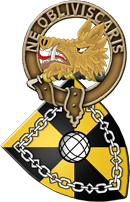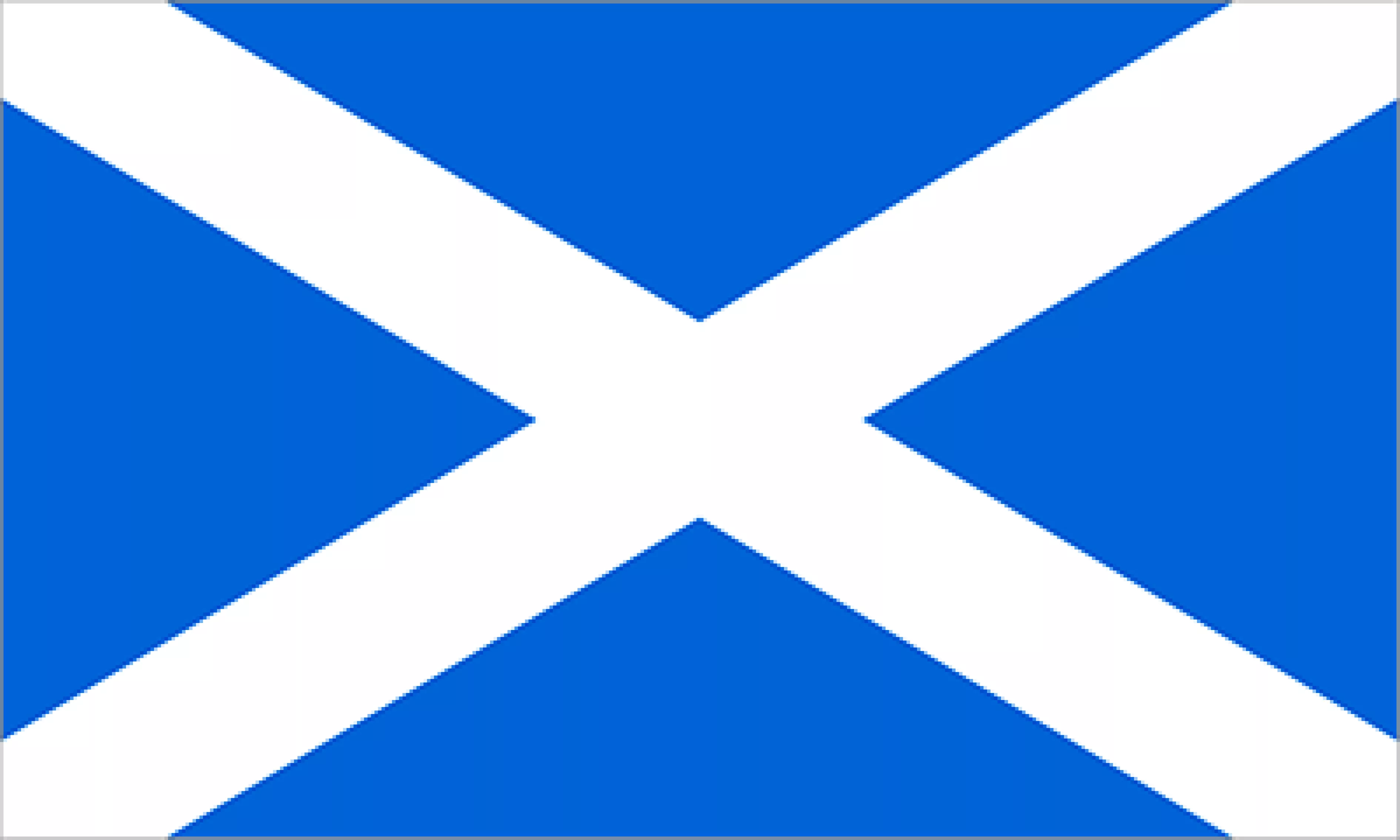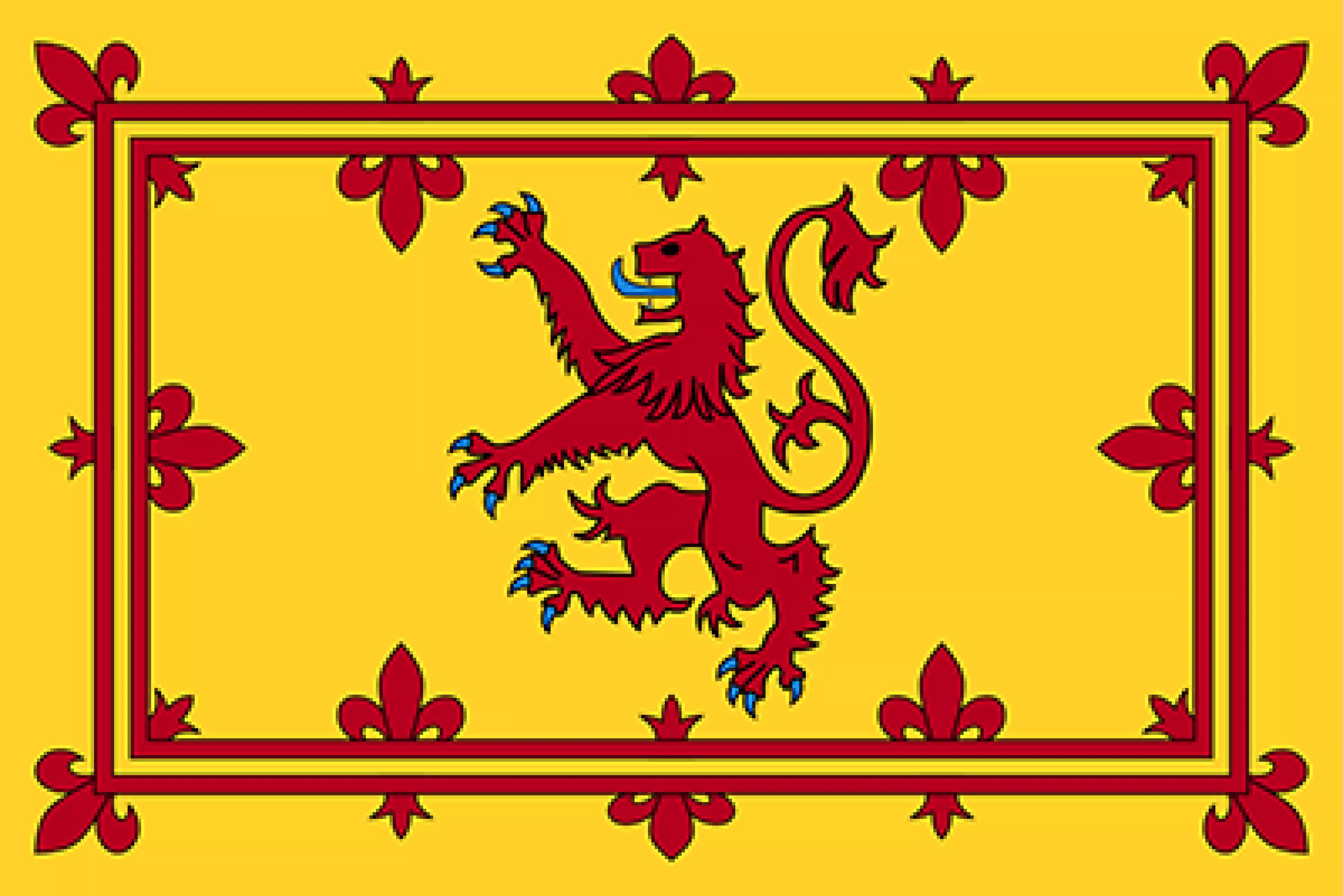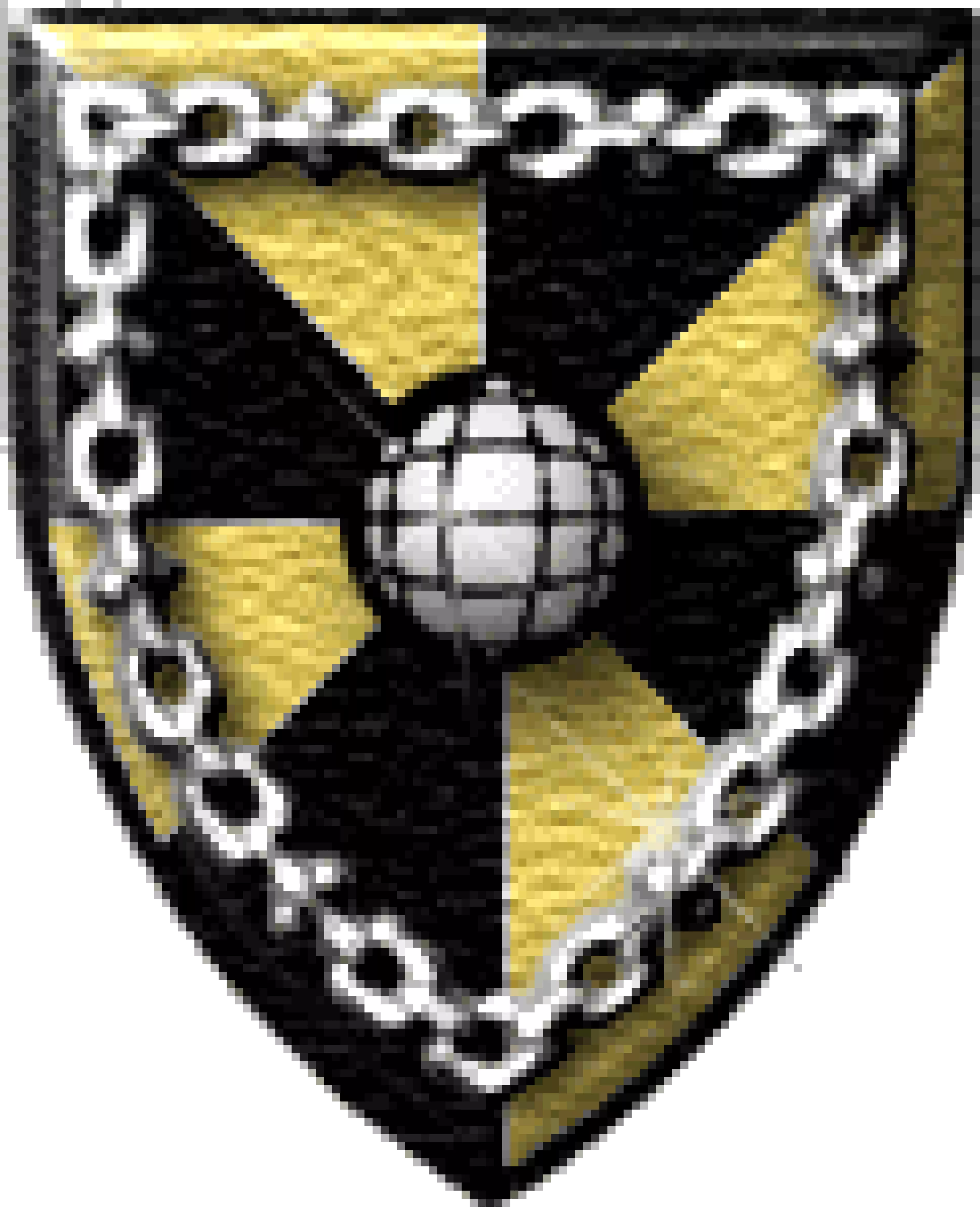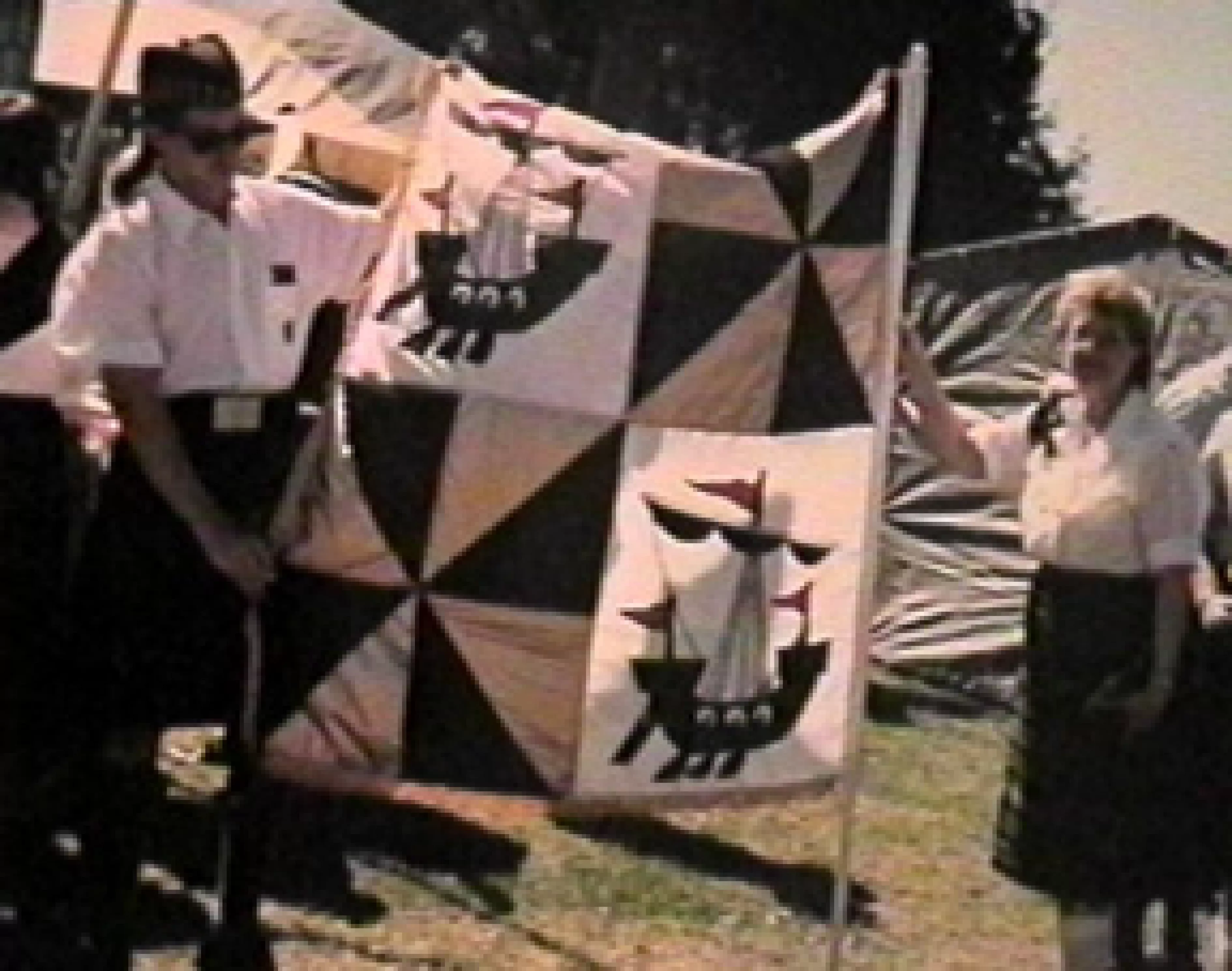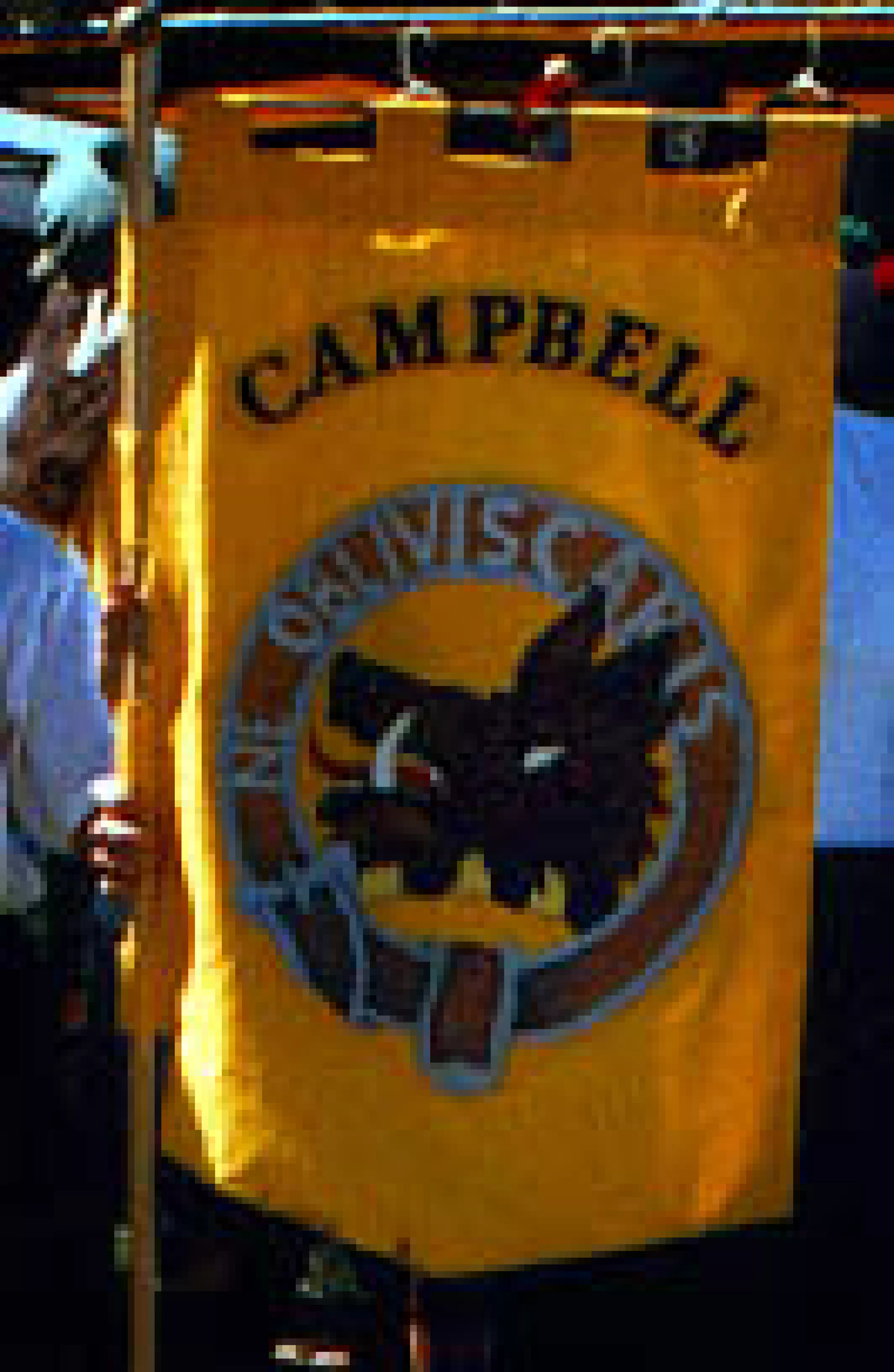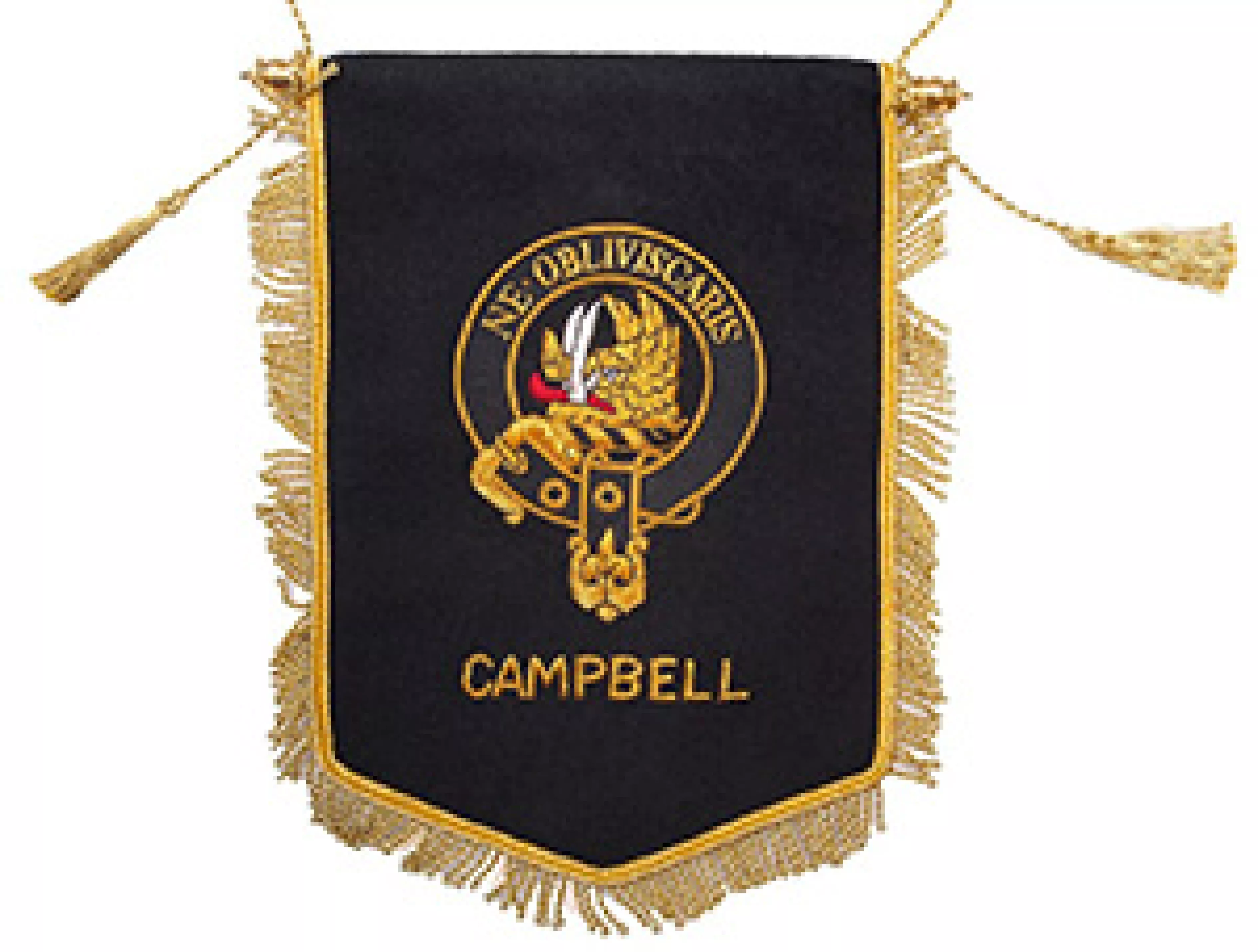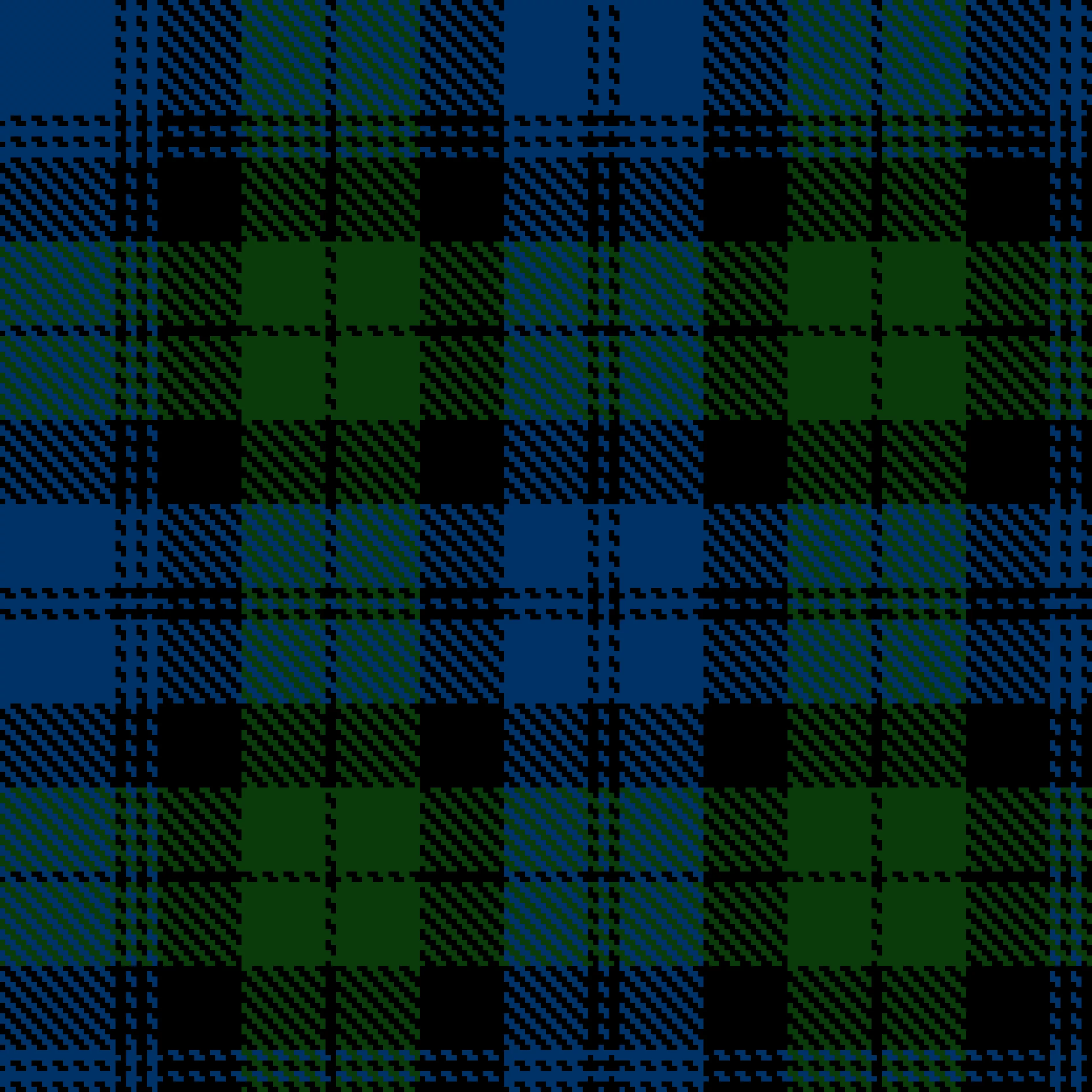INTRODUCTION
In all clans the Chief by tradition and courtesy allows members of his clan to wear his crest as a cap badge or brooch, the crest generally being of silver and always set within a circular belt and buckle, the motto of the chief being inscribed upon the belt. Wearing the Chief's boar's head crest is, for Campbells, an expression of symbolic adherence to the Chief and, through him, to their clan.
There is no such thing as a "clan" crest. The various houses of the chiefly kin within the clan have their own arms and crests. For example Campbell of Airds has a swan, Campbell of Inverawe a deer's head.
The heraldry of Clan Campbell is probably the most elaborate, fascinating and diverse of any family in the world, since the number of armigerous Campbells is greater than for any other clan. Those who visit Inveraray Castle can see something of the richness of this heritage displayed upon the heraldic family tree of the Campbells in the Clan Room.
Because of strong demand from the Clan Campbell Societies in recent years for heraldic emblems which they could use in parades and at Society tents at Highland Games, without contravening the Scottish laws of heraldry, our Chief created the Federation of Clan Campbell Societies. This enabled him to obtain a grant of arms from the Lord Lyon King of Arms for the Federation which can be used by the Societies who are members. These arms may also be used by the members of the Societies for as long as they are members. Reproducible copies of the art work for these arms is available from The Clan Campbell Society (NA) Journal editor.
BANNERS & FLAGS
- SALTIRE
- ROYAL STANDARD
- BANNER OF THE FEDERATION OF CLAN CAMPBELL SOCIETIES
- PERSONAL HERALDIC BANNERS
- BOAR’S HEAD BANNER
- TARTAN
SALTIRE
The flag of Scotland (Scottish Gaelic: bratach na h-Alba; Scots: Banner o Scotland, also known as St Andrew's Cross or the Saltire) is the national flag of Scotland, which consists of a white saltire defacing a blue field. The Saltire, rather than the Royal Standard of Scotland, is the correct flag for all private individuals and corporate bodies to fly.
The 1320 Declaration of Arbroath cites Scotland's conversion to Christianity by St. Andrew, "the first called to be an Apostle". Depiction of the saint being crucified on a decussate cross was seen on seals in Scotland from 1180 onwards and was used on a seal of the Guardians of Scotland, dated 1286.
The Battle of Athelstaneford in 832 A.D. was the birthplace of Scotland’s national flag, the Saltire, making it the oldest national flag in the world.
All those who feel loyalty to their Scottish ancestry may fly this flag, provided it is flown slightly lower than any adjacent national flag. The Saltire is highly suitable for use wherever overseas Scots gather.
ROYAL STANDARD
The Royal Banner of the Royal Arms of Scotland, also known as the Royal Banner of Scotland, or more commonly the Lion Rampant of Scotland, and historically as the Royal Standard of Scotland, (Scottish Gaelic: Bratach rìoghail na h-Alba, Scots: Royal banner o Scotland) or Banner of the King of Scots, is the royal banner of Scotland, and historically, the royal standard of the Kingdom of Scotland. Used historically by the Scottish monarchs, the banner differs from Scotland's national flag, the Saltire, in that its official use is restricted by an Act of the Parliament of Scotland to only a few Great Officers of State who officially represent the Monarchy in Scotland. It is also used in an official capacity at royal residences in Scotland when the Head of State is not present.
Its use in Scotland originated during the reign of Malcolm III (1058–1093). The earliest recorded use of the Lion Rampant as a royal emblem in Scotland was by Alexander II in 1222; with the additional embellishment of a double border set with lilies occurring during the reign of Alexander III (1249–1286). This emblem occupied the shield of the royal coat of arms of the ancient Kingdom of Scotland which, together with a royal banner displaying the same, was used by the King of Scots until the Union of the Crowns in 1603, when James VI acceded to the thrones of the kingdoms of England and Ireland.
Since 1603, the lion rampant of Scotland has been incorporated into both the royal arms and royal banners of successive Scottish then British monarchs in order to symbolize Scotland, as can be seen today in the Royal Standard of the United Kingdom. Although now officially restricted to use by representatives of the Monarch and at royal residences, the Royal Banner continues to be one of Scotland's most recognizable symbols.
The red and yellow Lion rampant flag is really the personal flag of the Kings or Queens of Scots. Currently the Lion rampart is only flown officially by certain specified people representing the Queen in Scotland. Most native Scots don't know this and use it anyway as if it was the Scottish flag. As matter of courtesy the Clan Campbell Society should avoid the use of this flag as a matter of respect for the Scottish monarch and for Scottish law.
ARMS OF THE FEDERATION OF CLAN CAMPBELL SOCIETIES
"Gyronny of Eight, Or and Sable, an orle of chains Argent, in the centre point a terrestrial sphere."
The Federation of Clan Campbell Societies was created in 1986 by His Grace, the 12th Duke of Argyll, to enable the various Clan Campbell Societies to use heraldic arms as granted to the Chief by the Lord Lyon King of Arms in Scotland, for the Federation. The need for a coat of arms for use by members of Clan Campbell Societies was made clear by the widespread misuse of the historical gyronny. The "Gyronny", is the personal coat of arms of MacCailein Mor, Chief of Clan Campbell, granted by the Sovereign, through the Lord Lyon, to him alone, which cannot be passed on to, or used by, anyone else. The Chief went to considerable lengths and expense to obtain a grant of these arms from the Lord Lyon for the Federation so that each Society, who was a member of the Federation, could use these arms as a correct use of Scottish heraldry.
The design of the coat of arms as granted, is the gyronny differenced by a silver globe at centre point, to emphasize the worldwide spread of our Clan. The globe is surrounded by a silver chain which represents our common bond of kinship and loyalty to our Chief.
Mac Cailein Mór, Chief of Clan Campbell also serves as the President of The Federation of Clan Campbell Societies.
Membership in The Federation of Clan Campbell Societies is open to all Clan Campbell Societies worldwide. All Clan Campbell Societies must have received the approval of Mac Cailein Mór in order to be eligible. Interested Clan Campbell Societies should contact the Chief Executive of the Clan Campbell for further details.
Mr. Hugh Nicoll
Argyll Estates factor
Inveraray Castle
Inveraray, Argyll, Scotland, UK
enquiries@inveraray-castle.com
Where available, it would be very colorful and totally appropriate to fly the heraldic banner of the Federation of Clan Campbell Societies at all Society tents and tables and as the lead banner in a parade (unless the Chief was present with his banner and banner bearer).
PERSONAL HERALDIC BANNERS
A banner of arms is a type of heraldic flag, characterized by sharing its imagery with that of the coat of arms (i.e. the shield of a full heraldic achievement, rendered in a square or rectangular shape of the flag).
The term is derived from the terminology of heraldry but mostly used in vexillology. Examples of modern national flags which are banners of arms are the flags of Austria, Iraq, and Switzerland.
The banner of arms is sometimes simply called a banner, but a banner is in a more strict sense a one of a kind personal flag of a nobleman held in battle.
Any Clan Campbell Society members who have been granted arms by the Lord Lyon King of Arms in the law of Scotland can fly them at the Campbell tents, as the late High Commissioner Hugh Purfield Moore did and as the Clan Campbell Society Sennachie Donald Draper Campbell has done.
This adds considerable color and authenticity as it was done in the Middle Ages. These can also be carried in parades when the owner marches. Care should be taken to ensure that the dimensions and design of the banner are correct. The shield is reproduced over the whole field of the banner and the helmet and crest are never shown. See Scottish Armory and Heraldry: A General Overview for additional information.
The above photo is of the Chief of Clan Campbell's Personal Banner. This should NOT be displayed at Games and Tents unless the Duke of Argyll is personally present at the event as he was for this occasion.
BOAR’S HEAD BANNER
The Clan Campbell clansman boar's head banner has become very popular at Highland Games and festivals and is appropriate to fly at the clan tents, to carry in parades, and to use at Kirking of the Tartan events.
Tartan Parade Banners can be handmade using Clan Campbell tartan lined with coordinating fabric or can be bought commercially from any number of vendors. Prices vary widely.
As a general rule the banner should display a large Clan Campbell boar's head crest, also known as the "Clansman Cap Badge", with the name "CAMPBELL" or "CLAN CAMPBELL" in large letters for visibility. For parades and tent displays it should measure approximately 2 feet x 3 feet. It should be hemmed at the top and fastened with Velcro tabs down the center of the back to secure the banner to the pole. This style of cloth or embroidered banner can last for years or decades with proper care.
Vinyl Tartan Parade Banners are the perfect solution for inclement weather. The clan crest and name are printed on waterproof vinyl. The banner measures approximately 2 feet x 3 feet hemmed at the top and fastened with Velcro tabs down the center of the back to secure the banner to the pole. Photo printing on vinyl allows for almost unlimited design options and creativity. Expect to get about 10 years of use for this material. UV resistant material adds to the life of the product, but also to the upfront cost.
Draping banners over a podium at clan meetings, Scottish or Clan presentations, or other events adds style and pride of heritage. These are normally smaller than parade banners at roughly 15" x 30" and can be lined with tartan or coordinating fabric and usually fringed on three sides. The top should be finished with a dowel pocket and extended across the width of the podium for proper display and securing it to the podium.
The author was giving a presentation one time and, unbeknownst to the organizers, dropped his Clan Campbell banner over the podium to much laughter, cheers and cat calls from the “MacDonalds” present! It definitely made a statement!
Two-Man-Carry Parade Banner are designed to be hung on a horizontal pole and carried by two persons. It can be made to your specifications using tartan lined with coordinating fabric and is hemmed on top to accommodate a carrying pole. The clan crest, clan name strip and even a fringe can be added if you want. These banners can also be used as wall hangings or as palls for closed casket funerals.
Commercial versions range in size from 18" x 96" to 3 feet by 8 feet. These banners are made by scanning the actual tartan and crest and printing them directly onto 12-ounce high quality vinyl with heat-welded seams. Wind slits are cut every 36" to prevent 'sailing' and grommets are placed every 24" for easy hanging. Be sure vinyl banners are finished with a clear-coat protective coating and carries a least 5-year fade-resistant warranty. With proper care and storage vinyl banners may last a lifetime.
Tent Banners displaying our clan tartan, crest and name proclaim your presence at any event!
TARTAN
Tartan banners are an American invention and have no heraldic significance but do have the advantage of demonstrating which is the Campbell tartan authorized for the clan by the Chief. The enthusiasm of some overseas Scots for tartan is not always shared by native Scots. The material was merely the colorful native cloth of their ancestors and, despite some exotic efforts, has absolutely no magical qualities or religious significance.
Calling the American institution of having people with tartan blessed in church a "Kirkin' o' the Tartan" is Lowland Scots. Most Highlanders spoke very correct English since it was the second language to their Gaelic. For Campbells, being Highlanders and originally Gaelic speakers, the event is officially a "Kirking of the Tartan", although that is merely a comical morsel and people will please themselves.
There is absolutely, totally and fundamentally no truth whatsoever, in any way at all, in the "legend" that the idea of having tartan blessed originated during the banning of tartan after 1746. This invention has been traced to an old and very charming minister in Florida who deeply believes that he heard it stated at the original "Kirking" held in Washington DC in the 1940s. If the Rev.Peter Marshall mentioned such an idea at that event, he was mistaken.
The very concept of blessing anything at all other than a human soul was anathema to the Scottish ministers in the 18th century, since it smacked too much of idolatory and therefore of Catholicism, to which they were then vehemently opposed.
The Rev. Peter Marshall, the Scot who became Chaplain to the United States Senate and a famous Christian, should be credited with instituting the "Kirking of the Tartan", a ceremony he first invented in the 1940s as a way to gather Scots to raise their morale and to hear his plea for funds for the British war effort in WWII. Due to the reverse view of tartan sadly held in Scotland today, as symbolizing the shallowness and exploitation of the tourist trade, the whole concept might be considered rather embarrassing and in-appropriate by some in Scotland.
So bear this in mind, your friends and kinsfolk in Scotland may likely never have heard of a "Kirking" as one has never been held in Scotland. It is an honest American-Scots tradition (so long as it stays free of any "legends") with a genuine root in American national history.
While tartan itself may be centuries old, there was no organized system for identifying `clan' tartans much if at all before 1800.
PERSONAL ARMS
"The Scottish system of heraldry is well controlled and is reckoned to be the purest in the world", so states Alastair Lorne Campbell of Airds, former Chief Executive of Clan Campbell who, as Unicorn Pursuivant, Court of the Lord Lyon, Scotland, is also one of the Officers of Arms for Scotland.
The senior herald of Scotland is the Lord Lyon King of Arms.
Lyon is the Monarch's Supreme Officer of Honour in Scotland. He is also a Judge of the Realm and is responsible, among many other duties, for adjudication of the succession to the Chiefship of clans when in question, the only official recognition given to clans in Scottish law.
In an article in the United States Scots magazine "The Highlander", Airds continues; "For those who reckon heraldry to be out of date, it is interesting to note that the last thirty years have seen more grants of arms by Lyon than in the whole of the preceding period back to 1672. Heraldry is alive and very well in Scotland".
In commenting upon those who are eligible for arms, Campbell of Airds states "... Lyon may entertain petitions (for arms) of any Scotsman - or woman - who is of good standing and can show that they have contributed to the life of the community."
"It is also possible for American Scots to apply for arms. These may be granted if the petitioner can prove his or her descent - in the male line - from a Scottish ancestor born or living in Scotland, or from one born or living in Canada. Those who can prove descent from an ancestor in the male line living in the American colonies before the Revolution are also eligible. This requires genealogical proofs sufficient to stand scrutiny in a Court of Law."
"The arms are actually granted to the ancestor with a suitable difference then added for the petitioner, unless he is the ancestor's heir in which case he inherits the un-differenced form of the arms."
The cost of a new grant of arms is not inexpensive; anywhere between £2,500 and £7,000 ($3300 and $9200). However if the petitioner can prove descent in the male line from a previous owner of arms, then these arms are awarded with a suitable difference and the cost may reduced substantially. The services of an officer of arms is not included in these figures. The Scale of Fees for the grant of Arms: Fees, fixed by Parliament, together with the fees for artwork were last revised in April 2024. The full list can be downloaded HERE.
You may see a man's arms displayed in different ways. During his lifetime his eldest son or grandson may display his father's or grandfather's arms with a `label' for difference. A wife may display her husband's arms upon an oval alone or beside those of her father. A daughter or granddaughter may display the arms of her paternal father or grandfather on an oval. Younger sons are obliged to petition for the arms of their armigerous father with a mark of difference.
There are endless and handsome ways in which arms may be displayed, whether on book plates, buildings, furniture, quilts, writing paper or vehicles.
Donald Draper Campbell, Esq., OStJ, OBM, FSAScot, Sennachie of the Clan Campbell Society has very kindly offered to assist with the petition for arms of any member of a Clan Campbell Society who has their proofs in order. For an in depth article on the subject, see:
Scottish Armory and Heraldry: A General Overview
